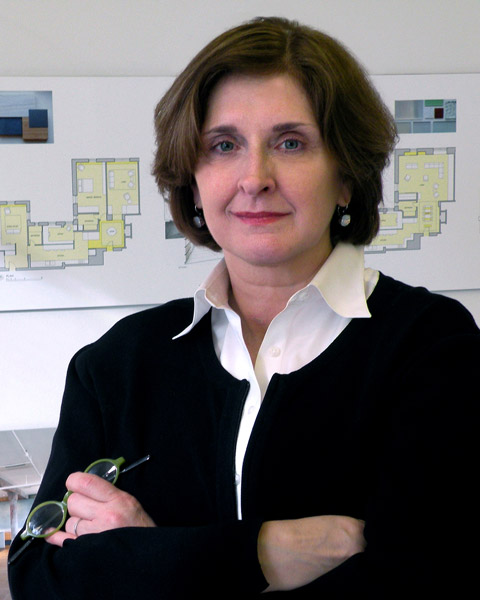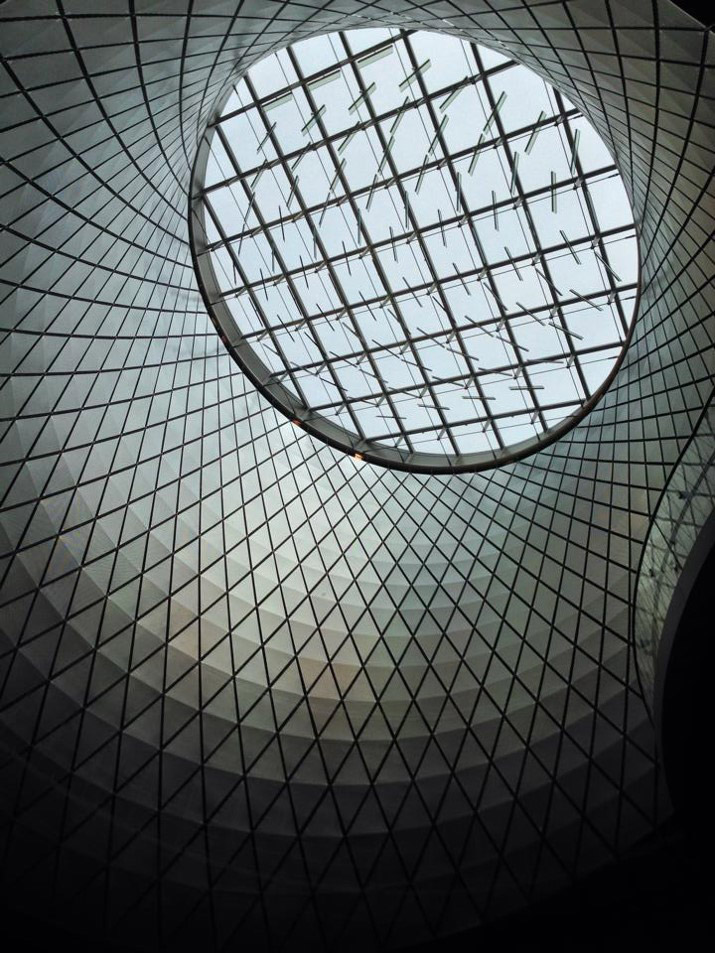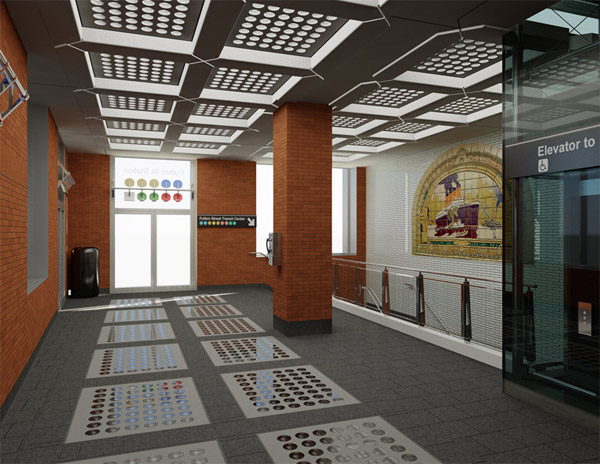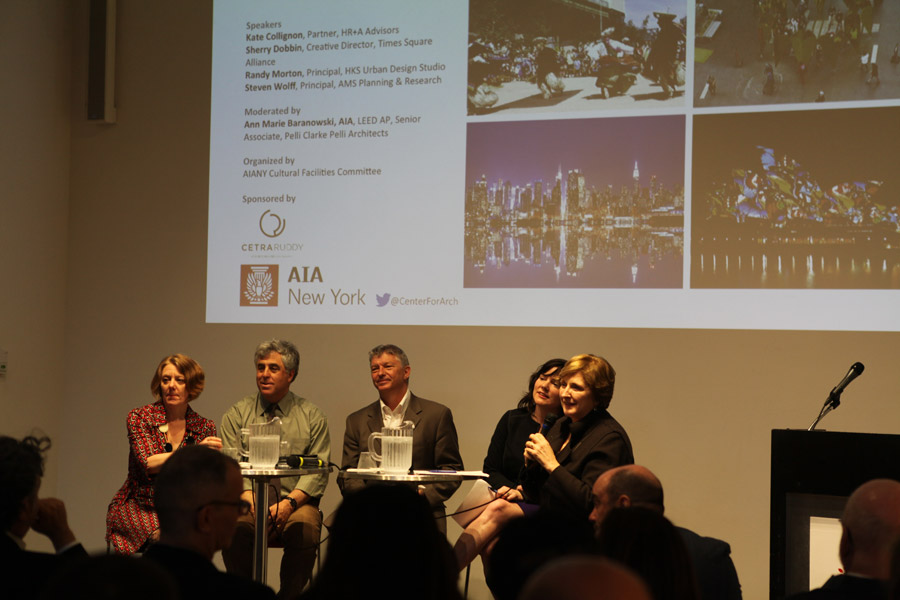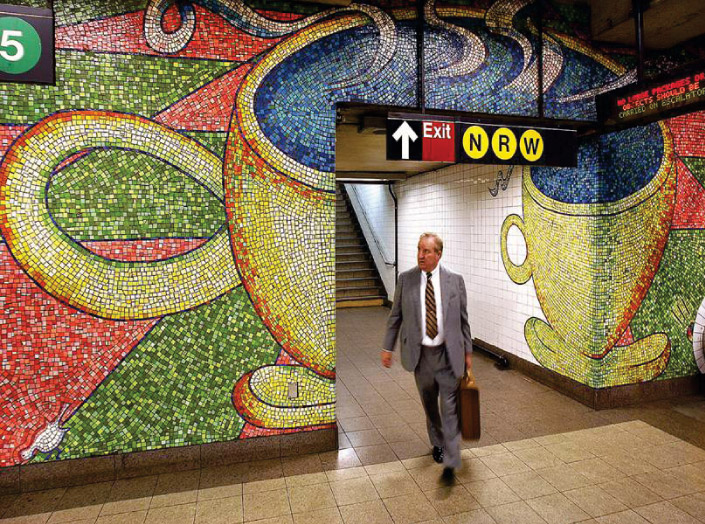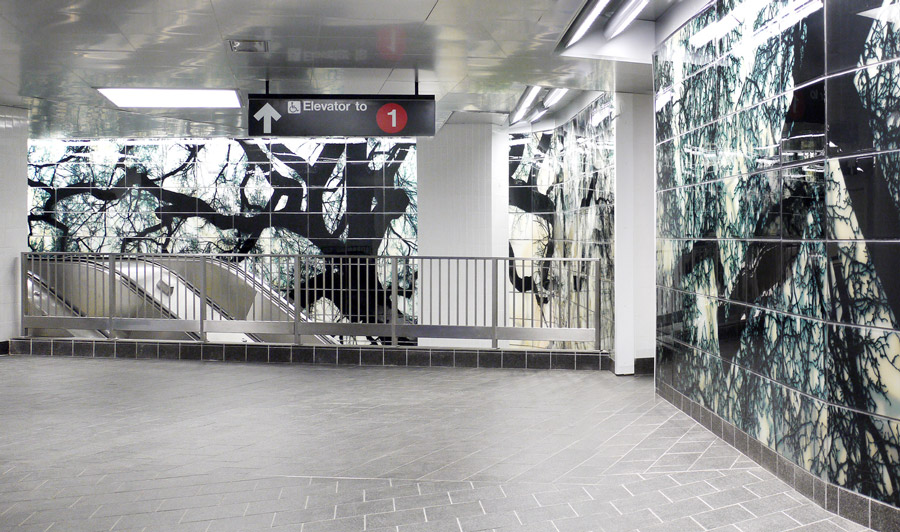by: AIA New York Chapter
Ann Marie Baranowski, FAIA, LEED AP, senior associate at Pelli Clarke Pelli Architects, strategically integrates art and architecture into original built works of enduring value and advocates for culture as vital to the public realm. The 2017 Jury of Fellows of the AIA elevated Baranowski to its prestigious College of Fellows in the second category of fellowship, which recognizes architects who have “Advanced the science and art of planning and building by advancing the standards of architectural education, training or practice.” Now among the AIA membership’s three percent distinguished with fellowship and honorary fellowship, Baranowski will be honored at an investiture ceremony at the AIA Conference on Architecture 2017 in Orlando as well as at the New Fellows Reception hosted by AIA New York on March 13.
On the occasion of her elevation, we asked Baranowski to pinpoint some of her most meaningful professional moments as well as return to the experiences that ignited her dedication to the practice of architecture:
Q: What is your proudest achievement as an architect?
A: My proudest achievement is my collective work with the Metropolitan Transit Authority. It began with writing the MTA/NYC Transit Station Planning and Design Guidelines. This led to working with MTA Capital Construction, Arts & Design and many wonderful artists on projects that integrate art to enhance New York City’s transportation infrastructure. From Elizabeth Murray’s Blooming at Lexington Avenue/59th Street station (a mezzanine of floor-to-ceiling glass mosaics images that playfully wrap corners and move up and down steps with vivid images meant to evoke the original Bloomingdale’s farm and the ritual of a subway trip) to James Carpenter’s Sky Reflector Net (a large-scale cable net structure with perforated metal diamond shaped panels that gathers the sky, folding it into the Fulton Center’s atrium), these projects are complex webs of design, collaboration, management and execution which have become intrinsic to a rich cultural tapestry within the urban public realm.
Q: What is your earliest memory of experiencing architecture?
A: As a child, I spent part of each summer at my uncle’s turn-of-the-century farm. The house had many more rooms than the suburban tract house in which I grew up. There were formal and informal parlors, a grand dining room, a home office, a powder room, a small porch off the kitchen and pantry, a large enclosed summer porch that spanned the width of the front of the house—all on the first floor! Though I had no name for it then, the spatial adjacencies piqued my curiosity; I spent time wandering the rooms trying to understand how each related to the others. Physical details such as glazed doors, elaborate wood moldings, and a fireplace merged with functional ones discovered in unfamiliar furniture and the ritual of fine china and other objects used expressly for holidays. The landscape of barns, fields and gardens afforded an experiential understanding of how structures can frame outdoor space. This setting ignited my fascination with how the physical shapes daily life.
Q: What does being a Fellow mean to you?
A: The idea of Fellowship inspires me to broaden my perspective—to learn about and share the interests and concerns of a select, nationwide group of architects elevated by their individual accomplishments. I also envision it as a springboard to advance opportunities for understanding culture as an investment essential to the built environment and for greater appreciation of minorities’ and women’s contribution to the profession. I am humbled by the honor of recognition for my career achievements.
Editors’ Note: This feature is part of a series celebrating the 18 members of the American Institute of Architects (AIA) New York Chapter that have been elevated to the prestigious AIA College of Fellows in 2017, an honor awarded to members who have made significant contributions to both the profession and society. Learn more about Fellowship here.








